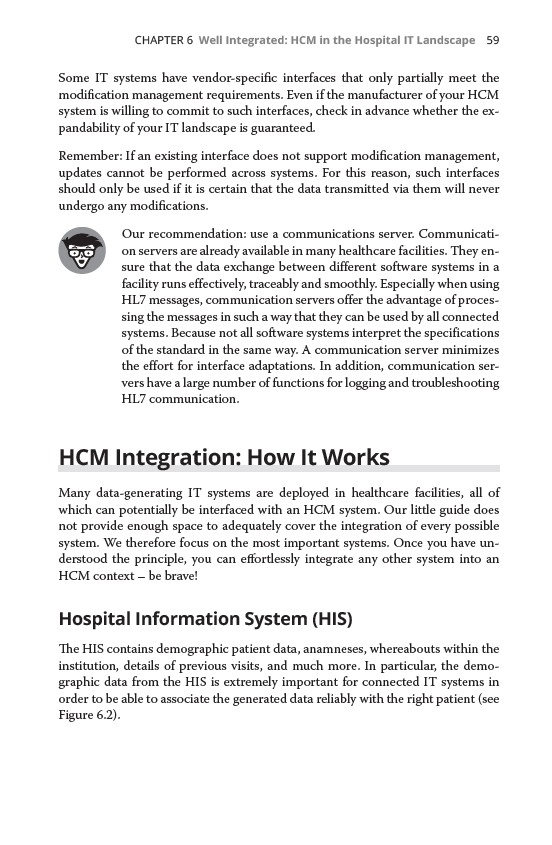
CHAPTER 6 Well Integrated: HCM in the Hospital IT Landscape 59
Some IT systems have vendor-specific interfaces that only partially meet the
modification
management requirements. Even if the manufacturer of your HCM
system is willing to commit to such interfaces, check in advance whether the expandability
of your IT landscape is guaranteed.
Remember: If an existing interface does not support modification management,
updates cannot be performed across systems. For this reason, such interfaces
should only be used if it is certain that the data transmitted via them will never
undergo any modifications.
Our recommendation: use a communications server. Communication
servers are already available in many healthcare facilities. They ensure
that the data exchange between different software systems in a
facility runs effectively, traceably and smoothly. Especially when using
HL7 messages, communication servers offer the advantage of processing
the messages in such a way that they can be used by all connected
systems. Because not all software systems interpret the specifications
of the standard in the same way. A communication server minimizes
the effort for interface adaptations. In addition, communication servers
have a large number of functions for logging and troubleshooting
HL7 communication.
HCM Integration: How It Works
Many data-generating IT systems are deployed in healthcare facilities, all of
which can potentially be interfaced with an HCM system. Our little guide does
not provide enough space to adequately cover the integration of every possible
system. We therefore focus on the most important systems. Once you have understood
the principle, you can effortlessly integrate any other system into an
HCM context – be brave!
Hospital Information System (HIS)
The HIS contains demographic patient data, anamneses, whereabouts within the
institution, details of previous visits, and much more. In particular, the demographic
data from the HIS is extremely important for connected IT systems in
order to be able to associate the generated data reliably with the right patient (see
Figure 6.2).